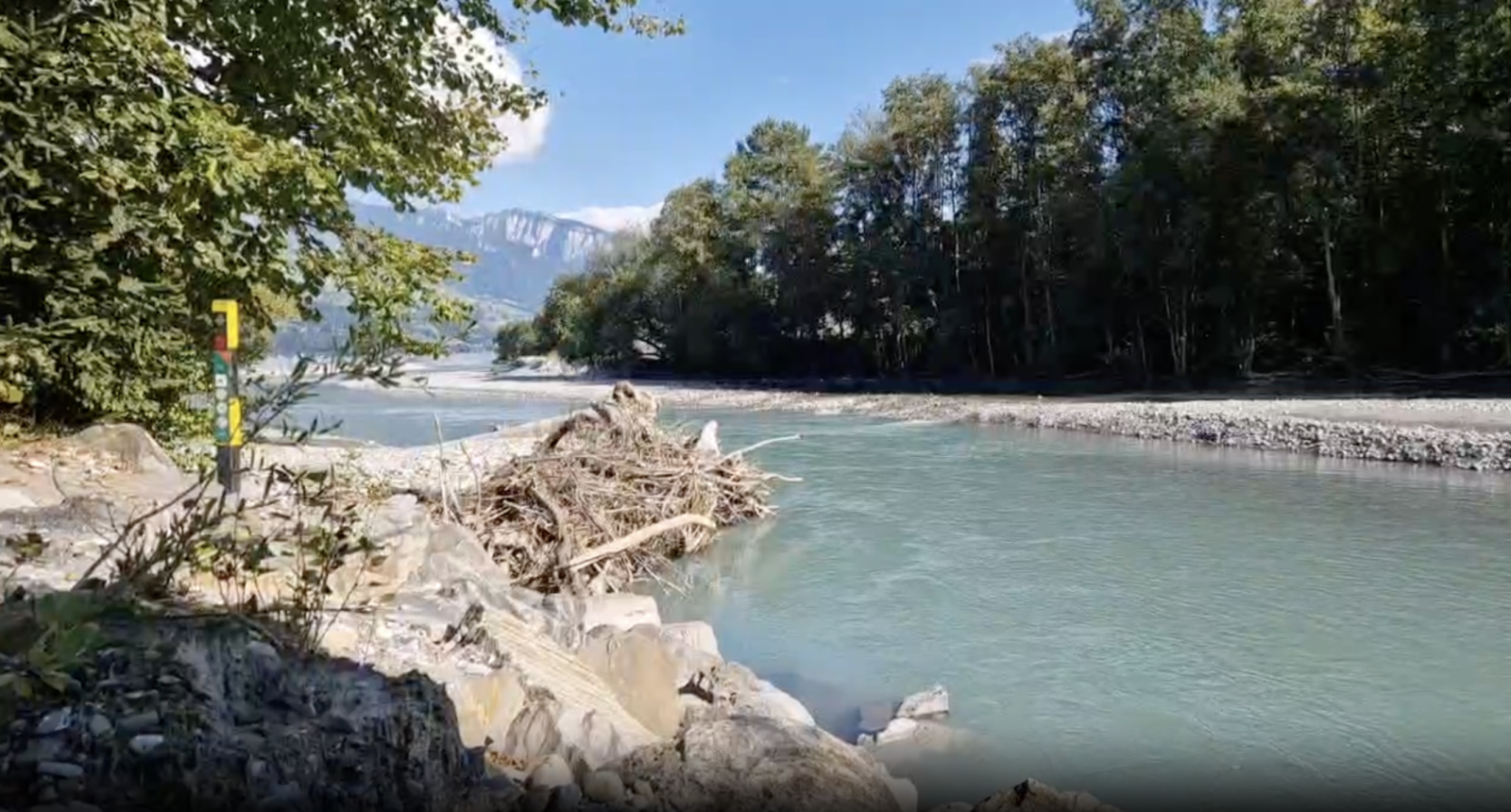Descripción
The Kanderdelta is an artificial delta created in the 18th century. Before its construction, the Kander River bypassed Lake Thun entirely. The river deposits substantial amounts of gravel into the delta and the lake, necessitating regular gravel extraction. At the same time, these gravel banks have become one of the few remaining breeding sites for the Chorlitejo Chico in Switzerland.
The delta features a dynamic mix of floodplain forests, still and flowing waters, gravel banks, and steep riverbanks, forming a unique and valuable natural habitat - a rarity in Switzerland. This exceptional ecosystem lies close to the city of Thun, resulting in conflicts between recreational use and conservation efforts. While the lakeshore is accessible year-round, there are even dedicated barbequing areas at the outer edge of the delta. A ranger frequently patrols the area, offering useful information to visitors.
Although the Chorlitejo Chico is the region's flagship species, over 200 bird species have been recorded here. The steep banks provide nesting sites for Martín Pescador Común and Mirlo-acuático Europeo. In the floodplain forests, breeding birds like Pico Menor, Cuco Común, and possibly Alcotán Europeo, which can be observed from April to September, find their habitats. Oropéndola Europea and Ruiseñor Común are relatively common, possibly you might see a Martinete Común or Garceta Común. Garcilla Cangrejera has also been observed.
Waders and waterbirds use the delta as a stopover during spring and autumn migrations. The Archibebe Claro is among the most frequent visitors. Other common sightings during migration seasons include Andarríos Bastardo, Andarríos Grande, Chorlitejo Grande, and Correlimos Menudo. Less common species like Vuelvepiedras Común and Correlimos de Temminck make appearances. During these times, the reeds are utilized by Pájaro-moscón Europeo and Aguilucho Lagunero Occidental.
In spring, the delta additionally hosts Archibebe Común and Combatiente, as well as Zarapito Trinador and Gaviota Cabecinegra. Inland, Colirrojo Real finds refuge in the floodplain forest. Later in spring and into summer, the Mosquitero Silbador appears here, and over the lake, migrating Fumarel Común can be spotted. Exceptional sightings include its relatives, the Fumarel Aliblanco, Fumarel Cariblanco, Charrancito Común, Pagaza Piconegra, and Charrán Patinegro.
In late summer, the rare Correlimos Tridáctilo is occasionally reported, while from September through May, Tarro Blanco can be seen resting on the lake. Autumn brings irregular sightings of Chorlito Gris, followed later by the more frequent Correlimos Común. From winter to spring, Cuchara Común and Silbón Europeo rest on the lake, but rarer birds are also possible, as one sighting of Pato Havelda proves.
The Kanderdelta is also a hotspot for rare waders. Eight confirmed sightings of Ostrero Euroasiático have been recorded in April and June. Other notable species include Correlimos Gordo, Avoceta Común, Chorlitejo patinegro, and Alcaraván Común. Additional rarities such as Bisbita Campestre, Colimbo Grande, Zarcero Icterino, Chorlito Dorado Europeo, Terrera Común, Falaropo Picofino, Zampullín Cuellirrojo, Golondrina Dáurica, Págalo Parásito, Págalo Grande, Gaviota de Sabine, and Agachadiza Chica have also been observed.
Detalles
Accesso
The Kanderdelta is easily accessible by bus from Thun (stop: Einigen, Kanderbrück). A parking lot is also available a few hundred meters away (Press P on the map). The area can only be explored on foot via a narrow path. This trail is not marked on maps and leads along the strictly protected Kander (1), where the Chorlitejo Chico nests on the gravel banks, through floodplain forests, and past a still water body created by gravel extraction (Unteres Kandergrien), which is often visited by herons (2), to the delta (3).
Depending on the water level, the 30 to 40-meter-wide shoreline strip of the delta can be walked on. However, it’s obviously preferable not to disturb or approach any wading birds that might be present. On the other side of the Kandergrien, there is a meadow for lounging (4) with a good view of the lake, and a kiosk operates there during the warmer months.


